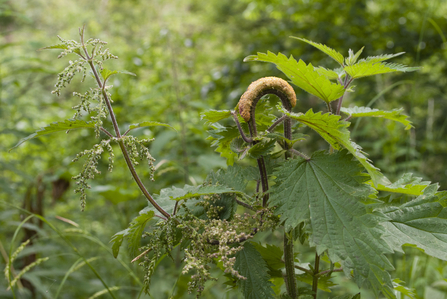
Nettles by Katrina Martin
Nettles and docks are important habitats for a great range of invertebrates such as ladybirds, damsel bugs, capsids, weevils, beetles, spiders.
But in large numbers, both species of plants can threaten important aspects of a grassland habitat and require careful management.
The spread of nettles and docks normally occurs on bare ground or gappy swards created through overgrazing or poaching, especially in shady areas, around feeding sites and in enriched sites such as dunging areas.
Weed seeds can be brought in with supplementary feed and in dung from elsewhere.
Docks are most likely to become a problem on fields grazed by cattle and horses.
Both nettles and docks are important habitats for a great range of insects such as ladybirds, damsel bugs, capsids, weevils, beetles, spiders and many other invertebrates are associated with both plants. Young nettles are the food plant of many moth larvae such as the snout, dot, burnished brass and younger mother-of-pearl and butterflies such as the peacock and comma.
Control options
Keeping nettles and docks at a low population level and prevention of a serious weed infestation is preferable to treating with herbicides. So:
• Keep the sward in good condition by careful stock management, adjusting grazing in drought and removing stock during very wet periods
• Minimise the effects of poaching around supplementary feeding and watering sites by siting in sacrificial permanent areas where poaching is almost unavoidable such as near gateways. Keep these sites away from sensitive areas of unimproved grassland
• Fence off badly poached areas to encourage recovery of the sward
• Consider dung scattering on horse-grazed fields. Complete removal of dung reduces the effects of latrine areas but can remove a useful dung habitat which also supports its own fauna and associated community (such as bats feeding on flies and beetles)
Where there is a serious weed infestation consider the following options:
• Accept some docks and nettles. For example, nettles will often thrive in the shade of large trees where grass will not. Repeatedly controlling the nettles will simply result in re-establishment
• Repeated cutting will weaken nettles and allow the grass sward to compete
